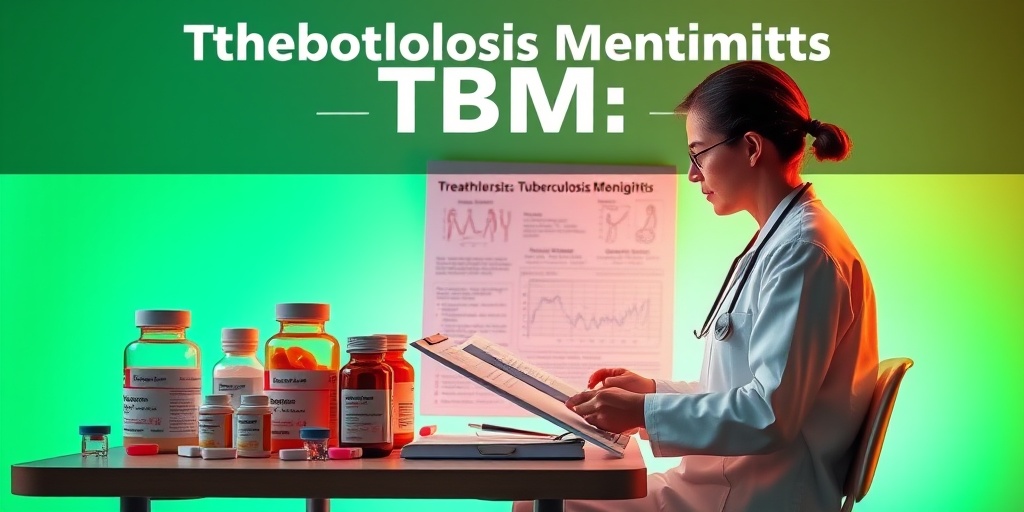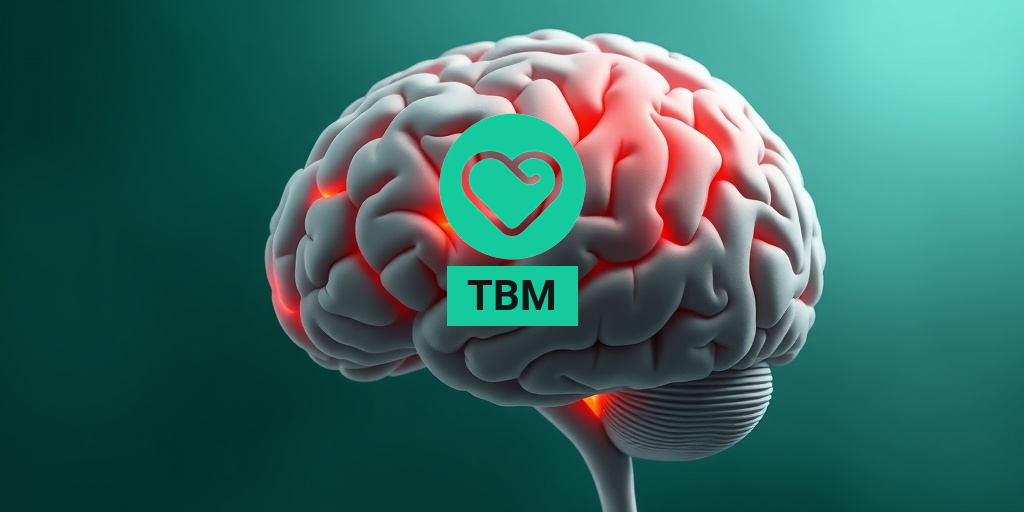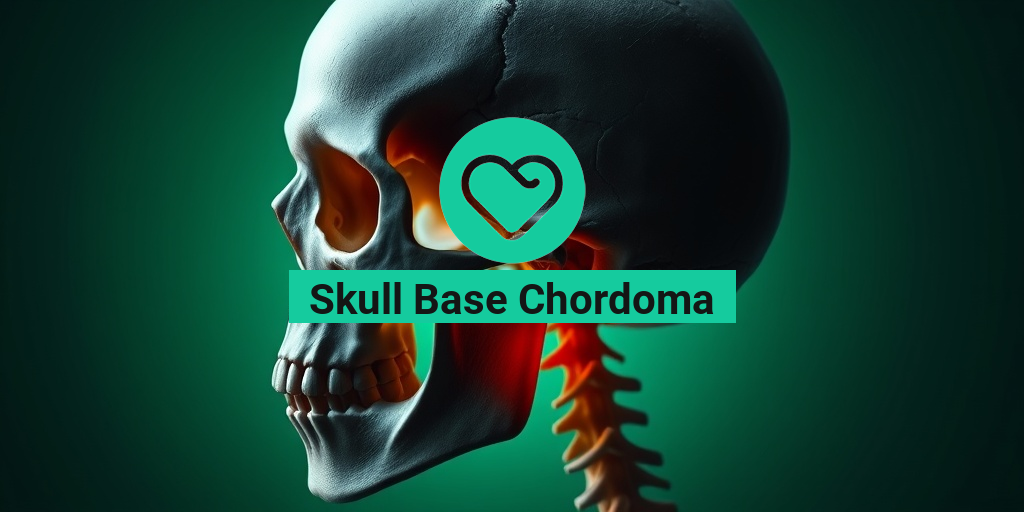What Is TBM?
TBM, or Tuberculosis Meningitis, is a severe form of tuberculosis that affects the membranes surrounding the brain and spinal cord. This condition arises when the bacteria that cause tuberculosis, primarily Mycobacterium tuberculosis, spread to the central nervous system. TBM is a serious health concern, particularly in regions where tuberculosis is prevalent, and it can lead to significant neurological complications if not diagnosed and treated promptly.
Understanding the Causes of TBM
TBM typically occurs as a result of a primary pulmonary tuberculosis infection. When the bacteria enter the bloodstream, they can reach the meninges—the protective layers covering the brain and spinal cord. Factors that increase the risk of developing TBM include:
- Weakened Immune System: Individuals with compromised immune systems, such as those with HIV/AIDS, are at a higher risk.
- Age: Young children and the elderly are more susceptible to TBM.
- Geographical Location: Living in or traveling to areas with high rates of tuberculosis increases the risk.
How TBM Differs from Other Forms of Tuberculosis
While TBM is a form of tuberculosis, it is distinct from pulmonary tuberculosis, which primarily affects the lungs. TBM can lead to severe complications, including:
- Neurological Damage: If left untreated, TBM can cause permanent brain damage.
- Seizures: Patients may experience seizures due to increased intracranial pressure.
- Coma: In severe cases, TBM can lead to coma or death.
Recognizing the symptoms early is crucial for effective treatment and recovery. If you suspect TBM, it’s essential to seek medical attention immediately. For more information on TBM and other health-related queries, you can visit Yesil Health AI, a valuable resource for evidence-based health answers.
TBM Symptoms
The symptoms of TBM can vary widely, but they often develop gradually over several weeks. Early recognition of these symptoms is vital for timely intervention. Common symptoms include:
Early Symptoms
- Fever: A persistent low-grade fever is often one of the first signs.
- Headache: Severe headaches that do not respond to typical pain relief methods.
- Nausea and Vomiting: These symptoms may occur as the condition progresses.
Advanced Symptoms
As TBM progresses, more severe symptoms may manifest, including:
- Stiff Neck: A hallmark symptom of meningitis, indicating irritation of the meninges.
- Altered Mental Status: Confusion, drowsiness, or difficulty concentrating may occur.
- Seizures: As mentioned earlier, seizures can develop due to increased pressure in the brain.
Long-Term Effects
If TBM is not treated promptly, it can lead to long-term complications such as:
- Cognitive Impairment: Memory loss and difficulty with concentration.
- Motor Dysfunction: Weakness or paralysis in certain body parts.
- Behavioral Changes: Mood swings or personality changes may occur.
It’s essential to consult a healthcare professional if you or someone you know is experiencing these symptoms, especially in areas where tuberculosis is common. Early diagnosis and treatment can significantly improve outcomes and reduce the risk of severe complications.
In conclusion, TBM is a serious condition that requires immediate medical attention. Understanding the symptoms and seeking help can make a significant difference in treatment and recovery. For more detailed information on TBM and other health-related topics, consider visiting Yesil Health AI for reliable, evidence-based health answers. Stay informed and take care of your health! 🌟

TBM Causes
Tuberculosis Meningitis (TBM) is a severe form of tuberculosis that affects the membranes surrounding the brain and spinal cord. Understanding the causes of TBM is crucial for prevention and treatment. The primary cause of TBM is the bacterium Mycobacterium tuberculosis, which is the same bacterium responsible for pulmonary tuberculosis. Here’s a closer look at how TBM develops:
Transmission of Mycobacterium Tuberculosis
TBM typically occurs when the bacteria spread from the lungs to the central nervous system. This can happen through:
- Hematogenous Spread: The bacteria can enter the bloodstream and travel to the brain.
- Direct Extension: TB can spread from nearby infected tissues, such as the lungs or lymph nodes, directly to the meninges.
Primary Infection and Reactivation
In many cases, TBM arises from a primary infection of the lungs. After the initial infection, the bacteria can remain dormant in the body for years. Reactivation can occur due to various factors, leading to TBM. This reactivation is often triggered by:
- Weakened Immune System: Conditions like HIV/AIDS, diabetes, or cancer can compromise the immune system, allowing dormant bacteria to become active.
- Malnutrition: Poor nutrition can weaken the body’s defenses against infections.
Other Contributing Factors
While the primary cause of TBM is the Mycobacterium tuberculosis bacterium, several other factors can contribute to its development:
- Close Contact: Living in close quarters with someone who has active TB increases the risk of transmission.
- Geographical Location: Areas with high rates of tuberculosis, such as certain regions in Africa and Asia, have a higher incidence of TBM.
TBM Risk Factors
Identifying the risk factors for TBM is essential for early detection and intervention. Certain populations are more susceptible to developing TBM due to various underlying conditions and lifestyle choices. Here are some key risk factors:
Immunocompromised Individuals
People with weakened immune systems are at a significantly higher risk for TBM. This includes:
- HIV/AIDS Patients: The risk of developing TBM is much higher in individuals living with HIV due to their compromised immune response.
- Organ Transplant Recipients: Those who have undergone organ transplants often take immunosuppressive medications, increasing their vulnerability.
Chronic Health Conditions
Several chronic health conditions can also elevate the risk of TBM:
- Diabetes: This condition can impair the immune system, making it easier for TB bacteria to proliferate.
- Cancer: Patients undergoing chemotherapy or radiation therapy may have weakened immune systems.
Age and Lifestyle Factors
Age and lifestyle choices can also play a role in the risk of developing TBM:
- Young Children: Children under five years old are particularly vulnerable to severe forms of TB, including TBM.
- Substance Abuse: Alcohol and drug abuse can weaken the immune system, increasing susceptibility to infections.
Environmental and Socioeconomic Factors
Living conditions and socioeconomic status can significantly impact the risk of TBM:
- Crowded Living Conditions: People living in overcrowded environments are at a higher risk of TB transmission.
- Poverty: Limited access to healthcare and poor nutrition can increase the likelihood of TB infection and progression to TBM.
Understanding the causes and risk factors of TBM is vital for effective prevention and treatment strategies. By addressing these factors, we can work towards reducing the incidence of this serious condition. 🌍💪

TBM Diagnosis
Tuberculous Meningitis (TBM) is a severe form of meningitis caused by the Mycobacterium tuberculosis bacteria. Diagnosing TBM can be challenging due to its nonspecific symptoms and the overlap with other forms of meningitis. Early diagnosis is crucial for effective treatment and better outcomes. Here’s a closer look at how TBM is diagnosed.
Symptoms to Watch For
The symptoms of TBM often develop gradually and may include:
- Headaches: Persistent and severe headaches are common.
- Fever: Low-grade fever that may worsen over time.
- Nausea and Vomiting: These symptoms can occur as the condition progresses.
- Altered Mental Status: Confusion, lethargy, or changes in consciousness.
- Neurological Deficits: Weakness, seizures, or other neurological signs.
Diagnostic Tests
To confirm a diagnosis of TBM, healthcare providers typically employ a combination of the following tests:
- Lumbar Puncture (Spinal Tap): This is the most definitive test for TBM. It involves collecting cerebrospinal fluid (CSF) to check for the presence of Mycobacterium tuberculosis and other indicators of infection.
- CSF Analysis: The CSF is analyzed for white blood cell count, protein levels, and glucose levels. In TBM, the CSF often shows elevated protein and lymphocytic pleocytosis.
- Imaging Studies: MRI or CT scans of the brain can help identify complications such as tuberculomas or hydrocephalus.
- Blood Tests: While not definitive for TBM, blood tests can help identify active tuberculosis elsewhere in the body.
Importance of Early Diagnosis
Early diagnosis of TBM is critical as it can significantly affect the prognosis. Delayed treatment can lead to severe complications, including permanent neurological damage or death. If you or someone you know is experiencing symptoms consistent with TBM, it’s essential to seek medical attention promptly. 🏥
TBM Treatment Options
Once diagnosed, the treatment of Tuberculous Meningitis (TBM) typically involves a combination of medications and supportive care. The goal is to eliminate the infection and prevent complications. Here’s an overview of the treatment options available for TBM.
Antitubercular Medications
The cornerstone of TBM treatment is a regimen of antitubercular medications. The standard treatment usually includes:
- Isoniazid: A key drug that inhibits the growth of the tuberculosis bacteria.
- Rifampicin: This antibiotic helps kill the bacteria and is crucial for effective treatment.
- Pyrazinamide: Often included in the initial treatment phase to enhance the effectiveness of the regimen.
- Ethambutol: This drug is used to prevent resistance and is typically part of the initial treatment.
The treatment duration for TBM is generally longer than for other forms of tuberculosis, often lasting from 9 to 12 months. Adherence to the medication regimen is vital to ensure the best outcomes. 💊
Supportive Care
In addition to medication, supportive care plays a crucial role in the management of TBM. This may include:
- Hydration: Ensuring adequate fluid intake to prevent dehydration.
- Nutrition: A balanced diet to support the immune system and overall health.
- Monitoring: Regular follow-ups with healthcare providers to monitor progress and adjust treatment as necessary.
Managing Complications
Complications from TBM can arise, such as hydrocephalus or seizures. In such cases, additional interventions may be required:
- Shunt Placement: For patients with hydrocephalus, a shunt may be placed to drain excess cerebrospinal fluid.
- Anticonvulsants: If seizures occur, anticonvulsant medications may be prescribed.
In summary, the treatment of TBM is multifaceted, involving a combination of antitubercular medications and supportive care. Early diagnosis and adherence to treatment are essential for improving outcomes and reducing the risk of complications. 🌟

TBM Lifestyle Changes
Living with TBM (Tibial Bone Marrow) conditions can significantly impact your daily life. However, making certain lifestyle changes can help manage symptoms and improve overall well-being. Here are some effective strategies to consider:
1. Nutrition and Diet
A balanced diet plays a crucial role in managing TBM. Focus on incorporating the following:
- Anti-inflammatory foods: Include fruits, vegetables, nuts, and fatty fish rich in omega-3 fatty acids.
- Hydration: Drink plenty of water to keep your body hydrated and support overall health.
- Limit processed foods: Reduce intake of sugars and unhealthy fats that can exacerbate inflammation.
2. Regular Exercise
Engaging in regular physical activity can help strengthen the muscles around the affected area and improve mobility. Consider:
- Low-impact exercises: Activities like swimming, cycling, or yoga can be beneficial without putting too much strain on your bones.
- Strength training: Incorporate light weights or resistance bands to build muscle strength.
3. Stress Management
Chronic stress can worsen symptoms associated with TBM. Implementing stress-reducing techniques can be beneficial:
- Meditation and mindfulness: Practicing mindfulness can help you stay grounded and reduce anxiety.
- Deep breathing exercises: These can help lower stress levels and promote relaxation.
4. Sleep Hygiene
Quality sleep is essential for recovery and overall health. To improve your sleep:
- Establish a routine: Go to bed and wake up at the same time every day.
- Create a restful environment: Keep your bedroom dark, quiet, and cool.
5. Regular Check-ups
Staying on top of your health is vital. Regular visits to your healthcare provider can help monitor your condition and adjust treatment plans as necessary. Don’t hesitate to discuss any new symptoms or concerns.
TBM Prognosis
The prognosis for individuals with TBM can vary widely based on several factors, including the severity of the condition, the individual’s overall health, and the effectiveness of the treatment plan. Here’s what you need to know:
1. Understanding TBM Severity
TBM can range from mild to severe, and the prognosis often correlates with the severity of the condition:
- Mild cases: Individuals may experience minimal symptoms and can often manage their condition effectively with lifestyle changes and regular monitoring.
- Severe cases: These may require more intensive treatment, including medication or even surgical intervention, which can impact recovery time and overall prognosis.
2. Treatment Response
The effectiveness of treatment plays a significant role in determining prognosis. Some individuals may respond well to conservative treatments, while others may need more aggressive approaches. Regular follow-ups with healthcare providers can help tailor the treatment plan to achieve the best outcomes.
3. Long-term Management
Living with TBM often requires ongoing management. Individuals who actively engage in their treatment plans and make necessary lifestyle adjustments tend to have better prognoses. Key factors include:
- Adherence to treatment: Following prescribed medications and therapies can lead to improved outcomes.
- Support systems: Having a strong support network of family, friends, and healthcare professionals can enhance emotional well-being and adherence to treatment.
4. Monitoring for Complications
It’s essential to be vigilant about potential complications associated with TBM. Regular monitoring can help catch any issues early, leading to more effective interventions. Common complications may include:
- Infection: Increased risk of infections in the affected area.
- Bone health: Monitoring bone density is crucial, as TBM can sometimes lead to weakened bones.
In conclusion, understanding the lifestyle changes that can positively impact TBM and being aware of the prognosis can empower individuals to take charge of their health. By making informed decisions and staying proactive, you can enhance your quality of life while managing TBM effectively. 🌟

Frequently Asked Questions about TBM
What does TBM stand for?
TBM typically refers to a specific type of aircraft known for its performance and efficiency. It is widely recognized in the aviation community for its advanced technology and design.
What are the different models of TBM aircraft?
There are several models of TBM aircraft, including:
- TBM 700
- TBM 850
- TBM 900
- TBM 930
- TBM 960
Each model offers unique features and improvements over its predecessors, catering to various pilot needs and preferences.
What is the performance of TBM aircraft?
TBM aircraft are known for their impressive speed, range, and fuel efficiency. They are designed for both personal and business travel, making them a popular choice among pilots.
How does TBM compare to other aircraft?
When compared to other aircraft in its class, TBM models often stand out due to their combination of speed, comfort, and operational costs. They are particularly favored for their ability to operate from shorter runways.
What is the typical cost of owning a TBM?
The cost of owning a TBM can vary significantly based on the model, age, and condition of the aircraft. Additionally, maintenance, insurance, and operational costs should be considered when budgeting for ownership.
Are there any specific maintenance requirements for TBM aircraft?
Yes, TBM aircraft have specific maintenance schedules that must be followed to ensure safety and performance. Regular inspections and adherence to manufacturer guidelines are crucial for optimal operation.
Where can I find TBM aircraft for sale?
TBM aircraft can be found for sale through various aviation brokers, online marketplaces, and specialized aircraft dealerships. It’s advisable to conduct thorough research and inspections before making a purchase.
What is the community like for TBM owners?
The TBM community is known for being supportive and engaged. Owners often participate in forums, social media groups, and events where they can share experiences and tips related to flying and maintaining their aircraft.
Can I get training for flying a TBM?
Yes, there are training programs available for pilots interested in flying TBM aircraft. Many flight schools and specialized training centers offer courses tailored to the specific models.
What are the advantages of flying a TBM?
Some advantages of flying a TBM include:
- High speed and efficiency
- Ability to access smaller airports
- Comfortable cabin space
- Advanced avionics and safety features
These benefits make TBM aircraft a preferred choice for many pilots and travelers.




